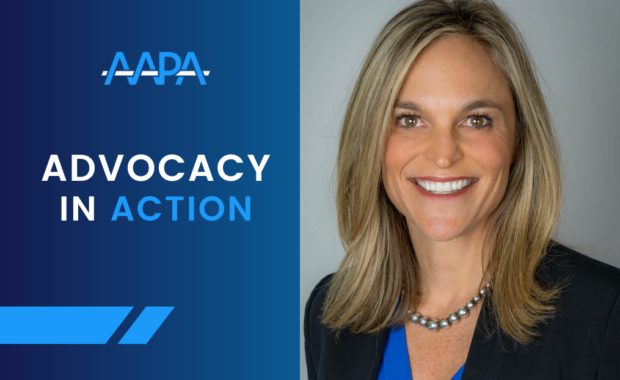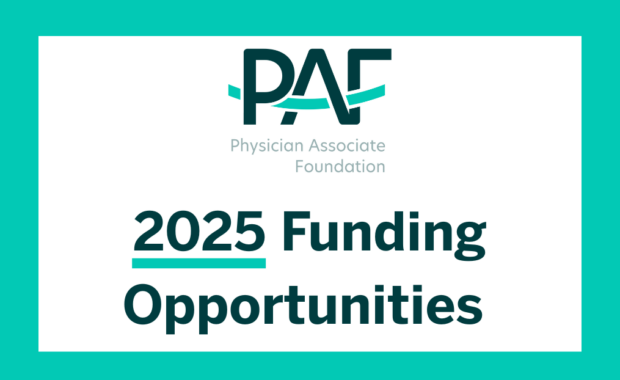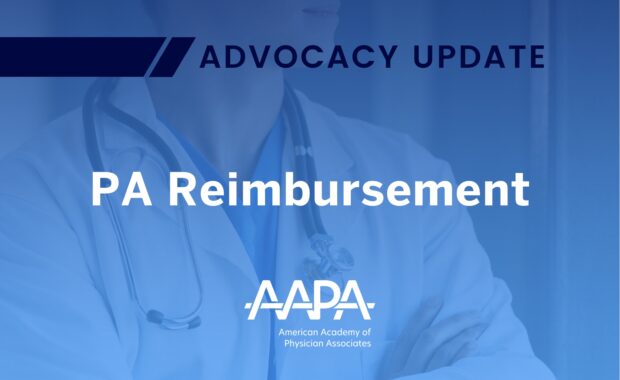Medicare Makes Major PA-Positive Changes for 2020
PA Supervision Rules Largely Defer to State Law
December 23, 2019
Representing a significant victory for PAs and the patients they serve, the final 2020 Physician Fee Schedule rule issued by the Centers for Medicare and Medicaid Services (CMS) changes Medicare’s supervision requirements for PAs by largely deferring to state law on how PAs practice with physicians and other members of the healthcare team. This change, advocated by AAPA, will take effect on January 1, 2020.
The CMS change will eliminate unnecessary administrative burdens on PAs. It will also expand access to care for millions of patients by largely deferring to states on how PAs work with physicians to ensure that Medicare policy aligns with the direction many states are already heading when it comes to how healthcare is delivered.
In recent years, 11 states have replaced the outdated term “supervision” with other terms, such as collaboration, to better reflect current PA practice. Other states have authorized the PA’s employer and/or employing facility to determine how PAs, physicians, and other members of the healthcare team interact clinically. Still other states, such as North Dakota, have eliminated the legal requirement for a specific relationship between a PA, physician, or any other healthcare provider for a PA to practice to the full extent of their education, training, and experience.
This change to more fully utilize PAs’ medical skillset represents a growing trend as the federal government continues to see PAs as an essential solution to many of our nation’s healthcare challenges.
In a related move, President Donald Trump signed an executive order last October that included instructions to remove unnecessary supervision requirements and other barriers to authorize and encourage efficient PAs practice. This followed a December 2018 federal government report on healthcare competition titled, “Reforming America’s Healthcare System Through Choice and Competition,” that specifically recommended “States should consider eliminating requirements for rigid collaborative practice and supervision agreements . . . that are not justified by legitimate health and safety concerns.”
Additionally, earlier this year, the Indian Health Service (IHS), an agency within the Department of Health and Human Services, removed the requirement for a PA to have a supervisory physician. IHS requirements for PA practice now state that the PA’s clinical privileges shall be commensurate with their competencies and operational needs for the service to which they are assigned.
PAs provide healthcare to patients with a level of quality that is comparable to physicians, confirmed both by independent research studies spanning decades and by the range of medical and surgical services PAs are authorized to perform under programs such as Medicare.
Supervision changes were not the only significant modifications made to PA practice by the 2020 Physician Fee Schedule final rule. Others include changes to hospice and documentation by PAs and for PA students.
Hospice
In 2019, PAs were authorized to serve as “attending physicians,” similar to physicians and advanced practice registered nurses (APRNs) under the Medicare program’s hospice benefit. However, even as PAs were granted attending physician status, restrictions on PAs providing care to hospice patients persisted. For example, CMS indicated that PAs acting as attending physicians did not have the ability to order medications for hospice patients.
The final rule expands the role of PAs as attending physicians by authorizing PAs to order medications.
PAs as Preceptors and PA Student Documentation
Based on a 2019 CMS transmittal, PA and NP student preceptors were not permitted to use the documentation of students in their medical record for billing purposes. In that transmittal CMS indicated that only the documentation of medical students could be part of the preceptor’s medical record.
In the final rule, CMS finalized a general principle to allow PAs, physicians, and APRNs who furnish and bill for their professional services to review and verify, rather than re-document, information placed in the medical record by students, residents, nurses or other members of the medical team. The work of PA students will also be treated the same as that of medical students for preceptor documentation purposes. This change occurred because several groups such as AAPA, Physician Assistant Education Association, American Association of Nurse Practitioners and Society of Teachers of Family Medicine worked together to educate CMS as to the importance of eliminating barriers to training PA and NP students.
For more information, contact [email protected].



